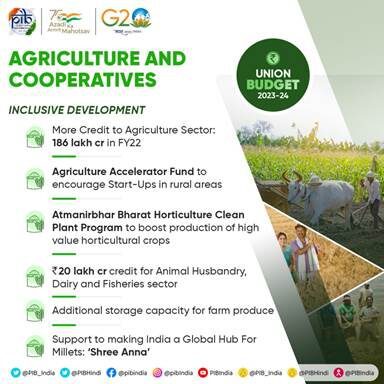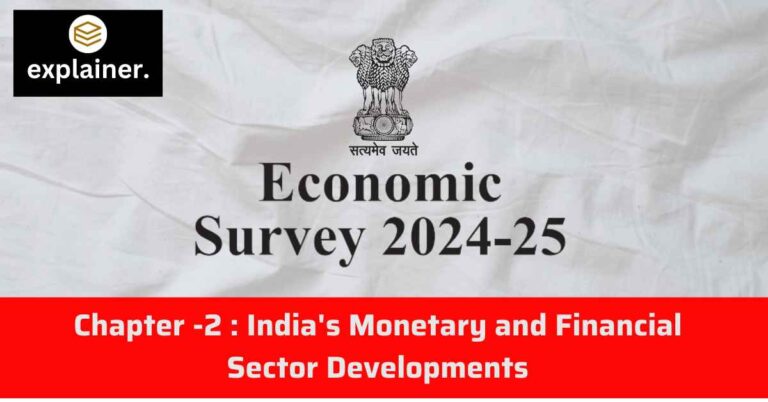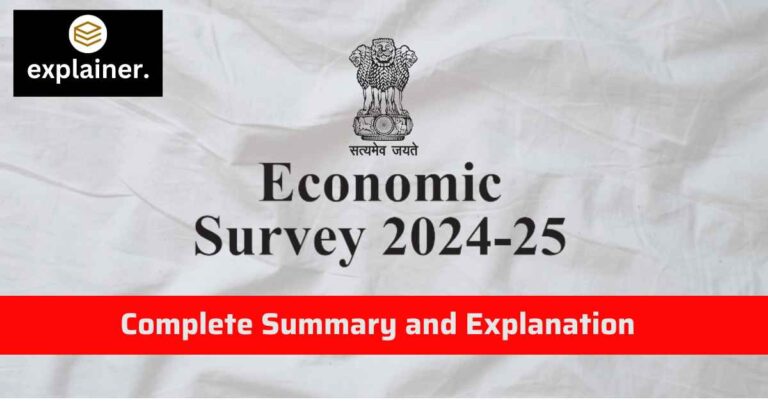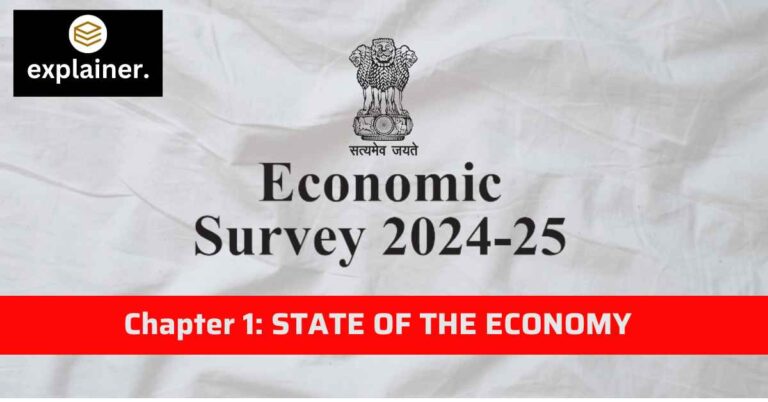October 25, 2025 11:30 am
Introduction
Agricultural Challenges and Opportunities in India :
Agriculture is a vital sector in India, supporting rural livelihoods, ensuring food security, and contributing significantly to the country’s economy. Employing over 42% of the workforce and contributing around 18% to the GDP, the sector is a pillar of economic development. However, rapid population growth, climate change, and resource mismanagement pose significant challenges. Simultaneously, opportunities in modernization, diversification, and sustainable practices offer a path to transform agriculture into a resilient and prosperous sector.
1. Pre-Independence Era
- Agriculture was characterized by subsistence farming, with low productivity and exploitative land tenure systems like the Zamindari system.
- Cash crops such as cotton, indigo, and opium were cultivated to meet colonial export demands, leading to food shortages.
2. Post-Independence Developments
- Land Reforms: Abolished intermediaries, distributed land to tenants, and introduced tenancy regulations.
- Green Revolution (1960s): Boosted production through high-yield varieties (HYVs), chemical fertilizers, and irrigation, especially in Punjab, Haryana, and Uttar Pradesh.
- Economic Reforms (1991): Liberalized agricultural trade and introduced private sector participation.
1. Declining Land Productivity
- Fragmented Landholdings: The average farm size is 1.08 hectares, making mechanization and economies of scale difficult.
- Soil Degradation: Overuse of chemical fertilizers and pesticides has reduced soil health.
2. Water Scarcity
- Agriculture consumes nearly 80% of India’s freshwater resources, often through inefficient irrigation methods like flood irrigation.
- Groundwater Depletion: Over-extraction in states like Punjab and Haryana has led to declining water tables.
3. Climate Change
- Erratic rainfall, rising temperatures, and extreme weather events such as droughts and floods have reduced agricultural yields.
- Crop losses due to unseasonal rains and cyclones have become increasingly frequent.
4. Lack of Market Access
- Farmers face challenges in accessing competitive markets due to fragmented supply chains and middlemen exploitation.
- Poor infrastructure, such as lack of storage facilities, leads to 20-30% post-harvest losses annually.
5. Credit and Indebtedness
- Many farmers rely on informal credit sources with high-interest rates, leading to a debt trap.
- Institutional credit through banks often remains inaccessible due to bureaucratic hurdles.
6. Low Technological Adoption
- Despite advancements, the adoption of modern technologies like precision farming, AI, and IoT remains limited to certain regions.
7. Agricultural Diversification Challenges
- The focus on staples like rice and wheat has led to monoculture, neglecting high-value crops such as fruits, vegetables, and pulses.

1. Technological Integration
- Precision Farming: Use of GPS, drones, and IoT for monitoring crop health and optimizing resource use.
- AI and Big Data: Predictive analytics for weather patterns, pest outbreaks, and market trends.
2. Diversification
- Encouraging farmers to cultivate high-value crops such as spices, fruits, and vegetables can increase incomes.
- Promotion of organic farming and niche products for export markets.
3. Agro-Processing and Value Addition
- Investment in agro-processing industries can reduce post-harvest losses and create employment.
- Examples include turning fruits into jams and juices or wheat into packaged flour.
4. Sustainable Practices
- Promoting natural farming techniques to reduce chemical dependency and restore soil health.
- Adoption of water-saving irrigation methods like drip and sprinkler systems.
5. Expanding Export Markets
- India is a leading exporter of rice, spices, and tea. Expanding trade agreements can boost agricultural exports.
- High-value products like organic spices and basmati rice have growing demand globally.
6. Government Schemes
- Pradhan Mantri Fasal Bima Yojana (PMFBY): Crop insurance to protect farmers against yield losses.
- e-NAM: National Agriculture Market for better price discovery and reduced middlemen interference.
- PM Kisan Samman Nidhi: Direct income support to farmers.
1. Green Revolution 2.0
- Focuses on promoting sustainable farming practices and increasing productivity in rainfed areas.
2. Doubling Farmers’ Income by 2022
- Emphasizes diversification, better price realization, and reducing production costs.
3. Soil Health Card Scheme
- Provides detailed soil analysis to farmers, helping them optimize fertilizer use.
4. Rashtriya Krishi Vikas Yojana (RKVY)
- Allocates funds for state-specific agricultural projects, including infrastructure development.
5. Krishi UDAN Scheme
- Aims to improve the transportation of perishable goods like fruits, vegetables, and meat through air cargo.
1. Amul’s Dairy Revolution
- Cooperative model in Gujarat transformed India into the largest milk producer globally.
2. Punjab’s Wheat Production
- Green Revolution practices led to food self-sufficiency in the 1970s, reducing dependency on imports.
3. Sikkim’s Organic Farming
- Sikkim became the first fully organic state, boosting export potential and reducing environmental impact.
4. Horticulture in Himachal Pradesh
- Expansion of apple orchards improved rural incomes and employment opportunities.
1. Shifting Cropping Patterns
- Rising temperatures have led to a reduction in the cultivation of water-intensive crops like paddy.
- Certain regions are shifting to drought-resistant crops like millets and pulses.
2. Pest and Disease Outbreaks
- Warmer temperatures create favorable conditions for pests like locusts, threatening food security.
3. Glacier Melt
- Himalayan glaciers feeding rivers like Ganga and Yamuna are melting, affecting irrigation in northern India.
1. Internet of Things (IoT)
- Real-time monitoring of soil moisture and crop health.
2. Drone Technology
- Efficient spraying of fertilizers and pesticides over large areas.
3. Artificial Intelligence (AI)
- Crop yield predictions and personalized farming recommendations for smallholders.
4. Blockchain
- Ensures transparency in supply chains, connecting farmers directly with buyers.
5. Vertical Farming
- Cultivation in stacked layers reduces space usage and water consumption, ideal for urban agriculture.
1. Israel’s Water Management
- Drip irrigation and desalination techniques ensure efficient water use.
2. China’s Agricultural Modernization
- Investments in mechanization and rural e-commerce connect farmers to markets.
3. The Netherlands’ Greenhouses
- Controlled environments for high-yield crop production serve as a model for India’s urban areas.
1. Political Interference
- Loan waivers and free power subsidies can distort market dynamics.
2. Poor Infrastructure
- Lack of rural roads, cold storage facilities, and warehouses leads to wastage.
3. Fragmented Governance
- Multiple ministries and schemes often lead to duplication and inefficiencies.
1. Sustainable Intensification
- Increasing yields on existing farmland through efficient use of resources.
2. Empowering Farmers
- Farmer producer organizations (FPOs) can strengthen bargaining power and market access.
3. Promoting Agroforestry
- Integrating trees with crops enhances biodiversity and soil health.
4. Expanding Agri-Tech Startups
- Encouraging innovations in logistics, storage, and marketing.
5. International Collaborations
- Learning from global best practices in irrigation, storage, and technology adoption.
Conclusion
Agriculture remains a critical sector for India’s growth, rural development, and food security. By addressing challenges such as climate change, low productivity, and market inefficiencies, and leveraging opportunities in technology, diversification, and policy reforms, Indian agriculture can transition into a modern, sustainable, and globally competitive sector.
Useful Links >>
UPSC Mains Syllabus – General Studies-I: This post provides a detailed breakdown of the General Studies-I syllabus, covering Indian Heritage and Culture, History, and Geography of the World and Society.
Complete Notes of History for UPSC: A comprehensive collection of history notes tailored for UPSC aspirants, encompassing ancient, medieval, and modern Indian history.
UPSC CSE Exam 2025: An Insight: Gain insights into the UPSC Civil Services Examination for 2025, including important dates, exam patterns, and preparation strategies.
Important Books for UPSC Exams: A curated list of essential books recommended for various subjects in the UPSC examination, aiding in effective study planning.
UPSC Prelims Syllabus: An in-depth overview of the UPSC Preliminary Examination syllabus, helping candidates understand the topics to focus on during their preparation.





